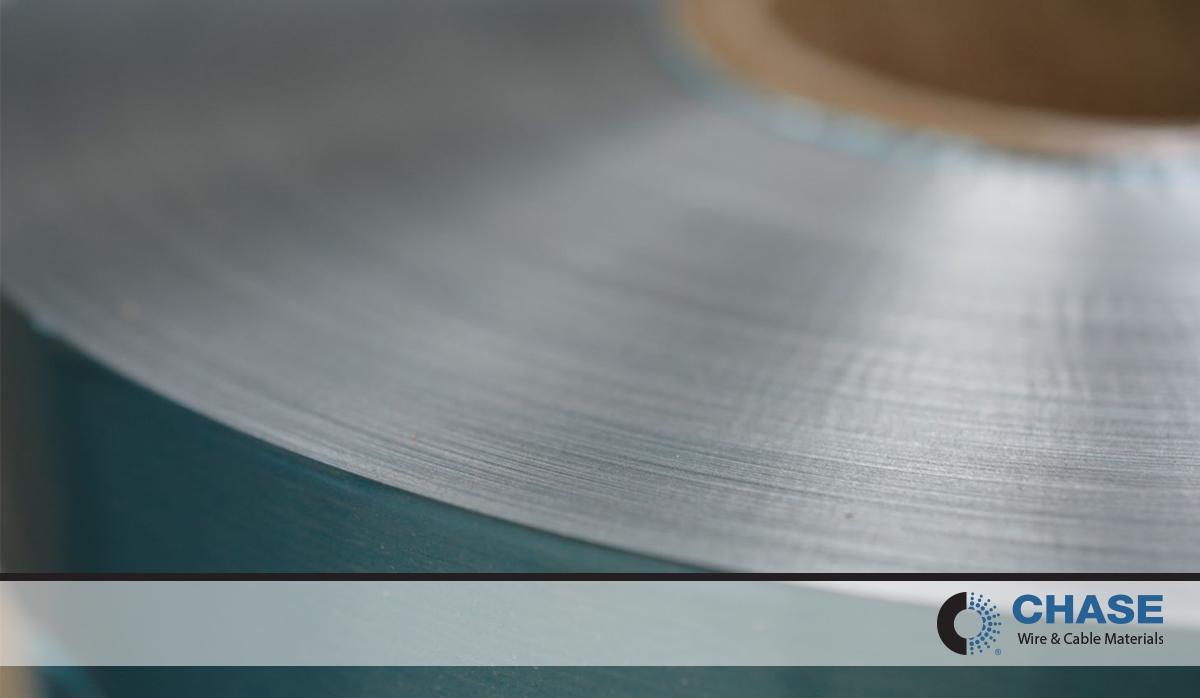Here at Chase, we offer many tape options. Whether your cable design requires a film used for...
Which Aluminum/PET Shielding Tape Is Right for Your Application?
 A question our sales team encounters regularly is, “What type of shielding tape should I use for my specific application?” With over 400 different product lines of varying constructions and materials, we understand it can be a challenge to determine the best fit. This blog post is intended to provide an overview of some of the most common material characteristics and application considerations to help you choose the correct Chase product line.
A question our sales team encounters regularly is, “What type of shielding tape should I use for my specific application?” With over 400 different product lines of varying constructions and materials, we understand it can be a challenge to determine the best fit. This blog post is intended to provide an overview of some of the most common material characteristics and application considerations to help you choose the correct Chase product line.
PET FILM CHOICE
Determining factors include…
- PET thickness – This property is governed by the amount of strength or tension required to form the proper tape wrap.
- the tensioning ability of the cable manufacturer’s taping equipment -- Typically, the more refined the tape pay-off, the thinner the PET backing that’s used. This can determine whether a higher yield tape (either .00048, .00075, 00092 or thicker) can be used to laminate to the aluminum foil.
- the need for some dielectric strength in the tape itself -- In some cases, a thicker film with a higher dielectric or insulative value to complement the insulating compound is required in a low-loss cable. For example, in some cable applications, the farther the aluminum shield is from the copper conductor, the lower the signal loss, thus lower capacitance, which creates better, faster and clearer cable signal.
- the use of a thin polypropylene film -- If the user is concerned about smoke emissions from a denser PET film, a thin film is employed. However, the cable manufacturer using the tape would sacrifice strength and durability.

ALUMINUM FOIL CHOICE
Aluminum thickness requirement typically determined by…
- the mechanical environment in which the cable will be exposed: EMI/RFI or interference in signal transmission from radiation of nearby electrical and/or magnetic fields of a particular environment.
- crosstalk: refers to the superimposing of the standard AC signals between two or more nearby wires or cables. The most effective means of mitigation is individually shielded twisted pairs. NEXT (Near-End Crosstalk typically between pairs) and AXT (Alien Crosstalk from other cables) are forms of EMI.
- the level of electrical noise in a particular environment: areas containing radio transmitters/receivers, electrical power lines, radar, engines, electric motors, electronic ballasts and broadcasting towers.
- attenuation: the effect of signal reduction (loss) along the length of a radio transmission
- transfer impedance: used to determine shield effectiveness at lower frequencies (1 GHz) against both ingress and egress of interfering signals. Cable shields as noted above are normally designed to reduce the transfer of interference; hence, shields with lower transfer impedance are more effective than shields with higher transfer impedance.
- the level of the cable frequency. Heavier shielding is most effective for high-energy/high-frequency RFI applications.
- the level of data security required: Hospitals, banks, military bases, airports, and government buildings are locations where a high level of security and speed are demanded.
Here at Chase we are eager to assist you in choosing the right product line for your specific project. Our sales team has worked with wire and cable manufacturers for decades from standard applications to extremely specialized constructions tailored for individual customer demands. Reach out to us anytime to learn more about our unmatched selection of shielding tapes.





